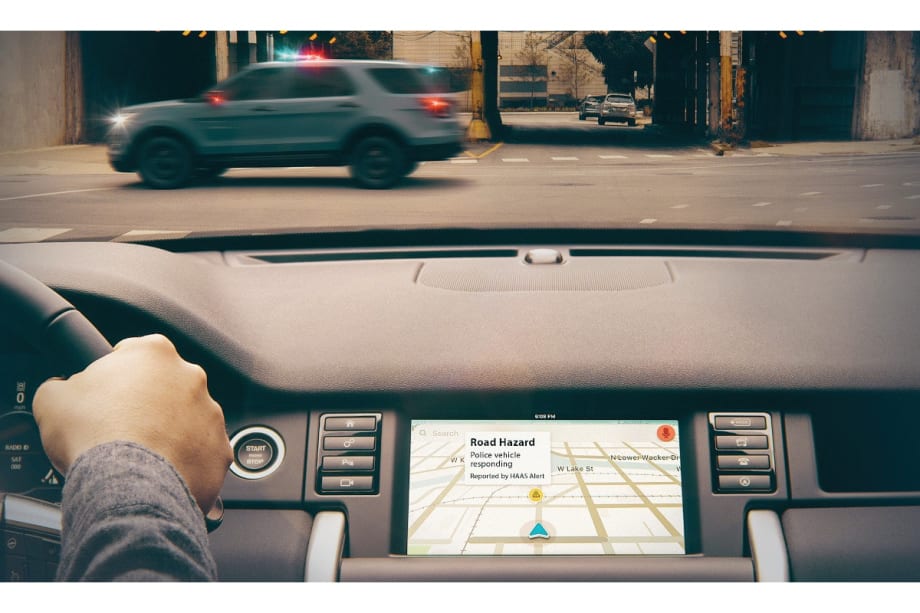"Up until now, the only options were move-over enforcement or educational campaigns, but enforcement and education aren't the same as prevention," says Hohs, CEO and co-founder of HAAS Alert. "People usually have about 3 seconds to react once they see lights and hear sirens before impact. It's closer to 30 seconds with our service, which is usually broadcast to drivers about a half-mile before they're approaching a vehicle and ensures more time for the driver to react."
The earliest versions of the service explored using technology to recognize the sound of emergency sirens and then alert drivers of an approaching vehicle. But in noisy cities that didn't always work, and it didn't inform drivers about stationary vehicles with only lights activated for a traffic stop, for example.
Now, HAAS Alert's Safety Cloud activates and broadcasts an alert via a cellular signal when emergency lights and sirens are active. "That's the trigger most departments use to know that these vehicles actually want to be seen and are trying to alert drivers near the vehicle to their presence," says Hohs. It's important to the company that their service not compromise officer safety by disclosing police vehicles' locations.
He says Safety Cloud alerts, which pop up on a smartphone screen, provide drivers with just enough information to protect them. They don't even specify a law enforcement vehicle, just that some type of emergency vehicle is near. One type of alert is for stationary vehicles ahead, and the other is for vehicles actively responding nearby.
The system is most often set up to trigger once an emergency vehicle's lightbar is activated, but it is very flexible. Safety Cloud could be set up to only broadcast alerts to drivers once one specific lightbar pattern is activated, or it could be connected to a different device's "switch" to trigger activation, allowing the service to be used by unmarked cars without activating lights and sirens.













